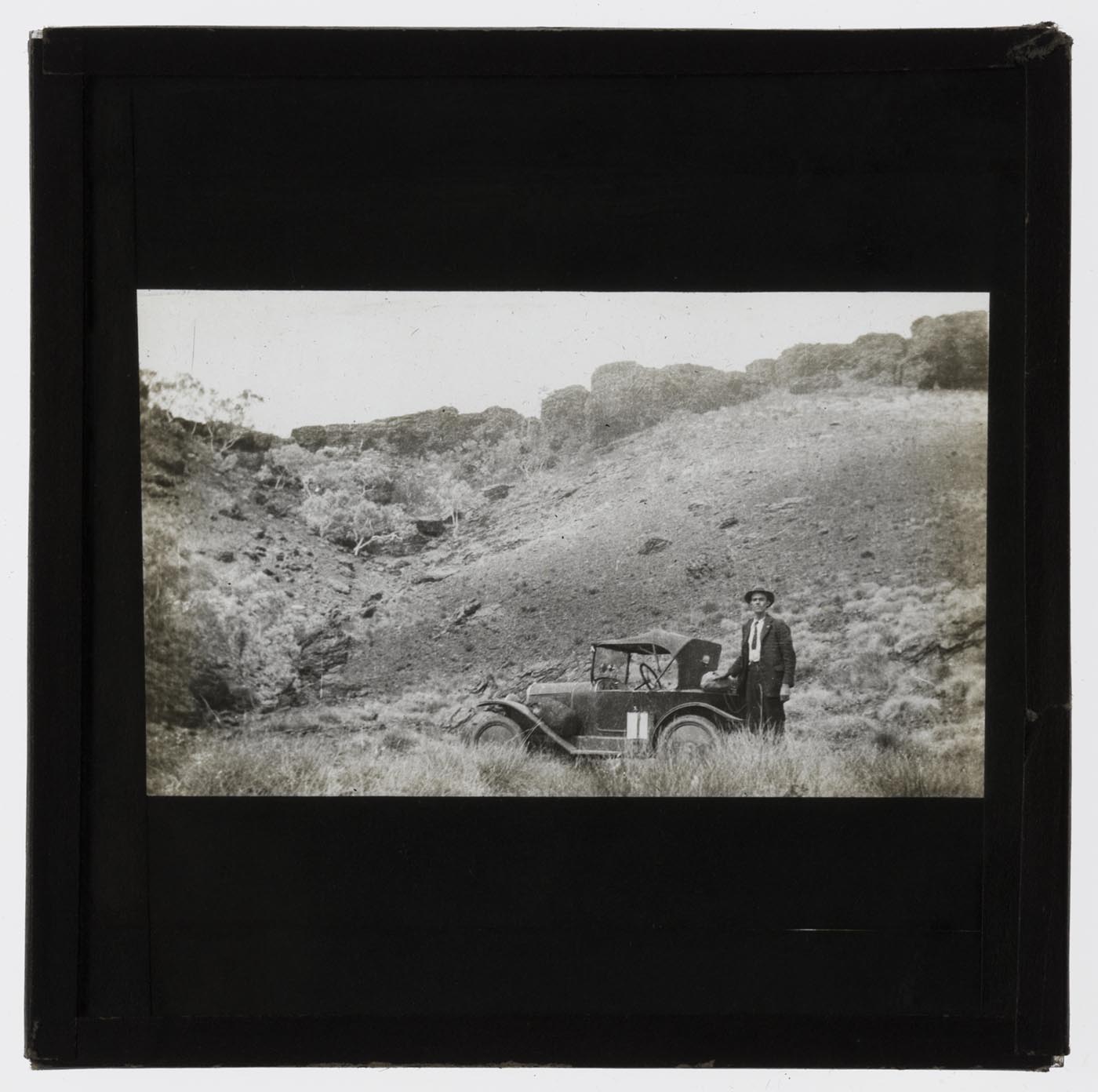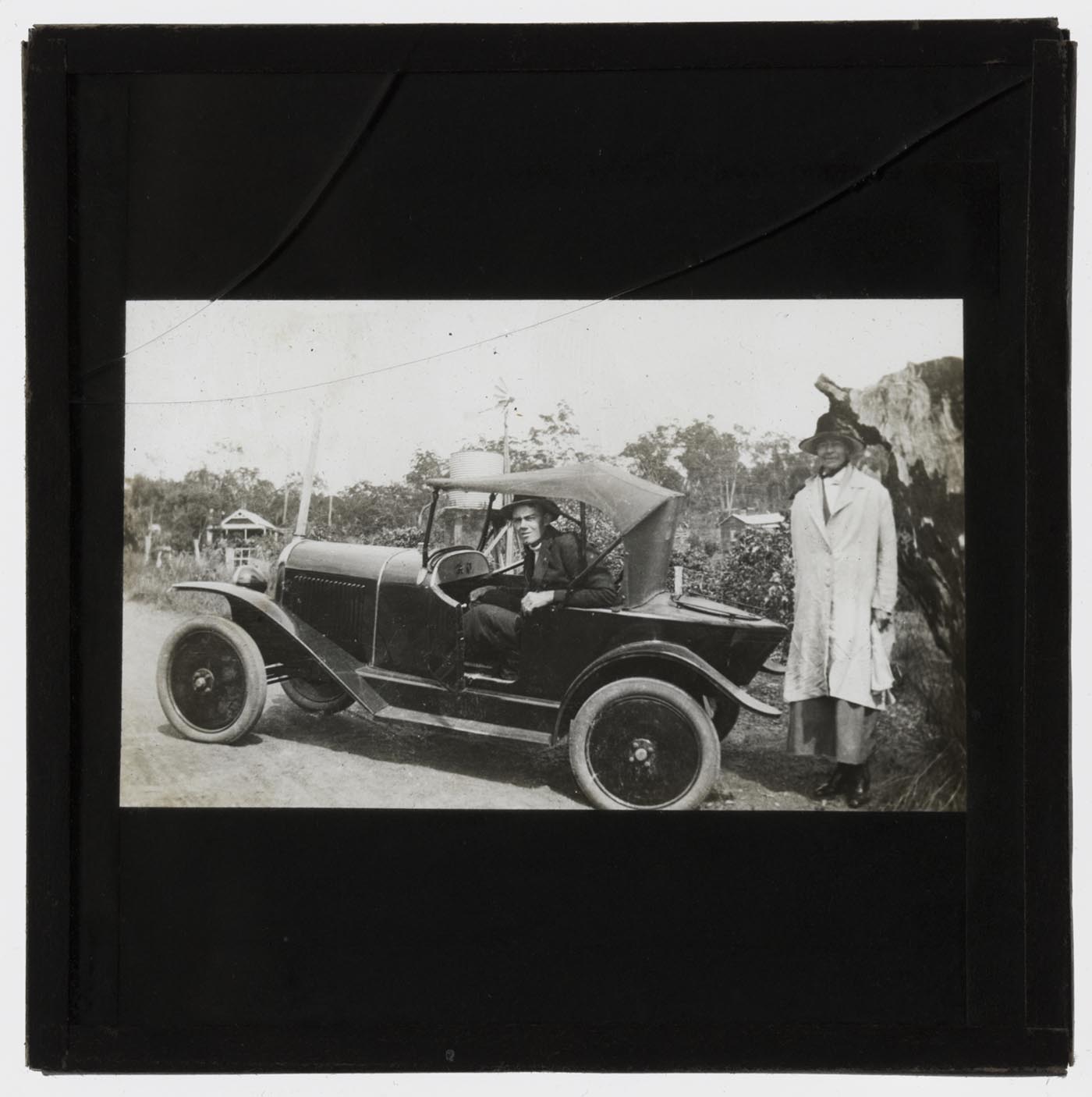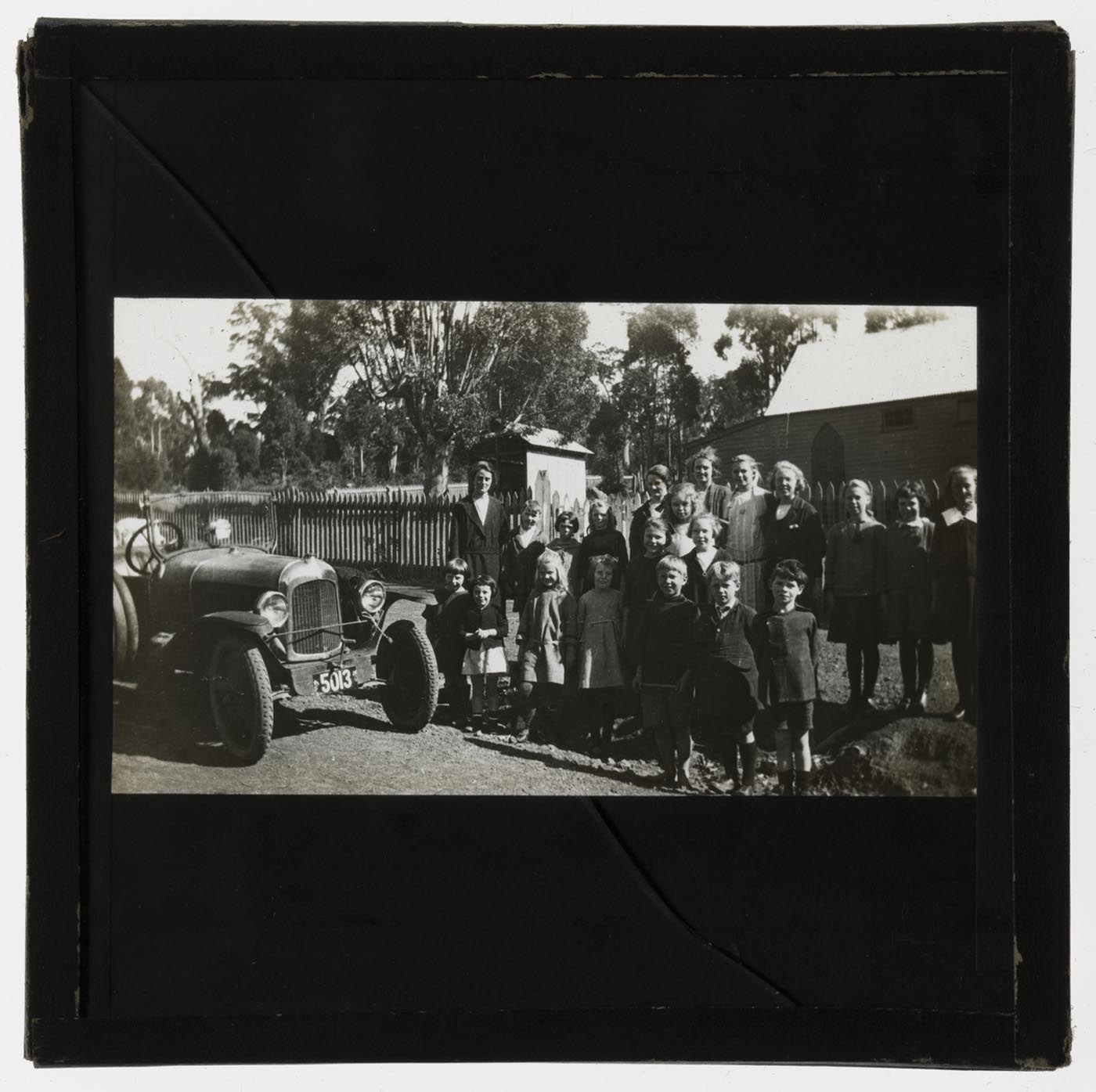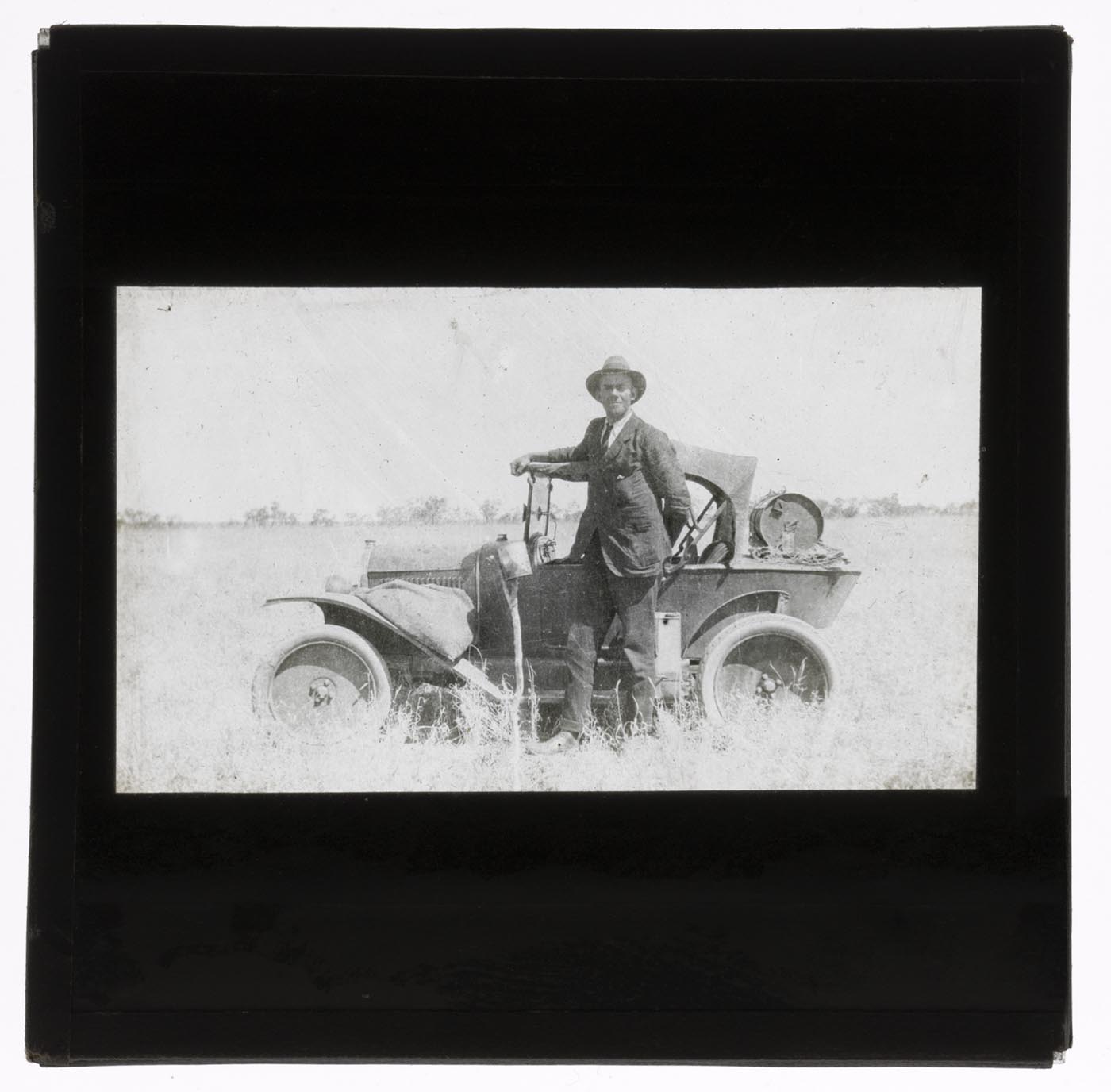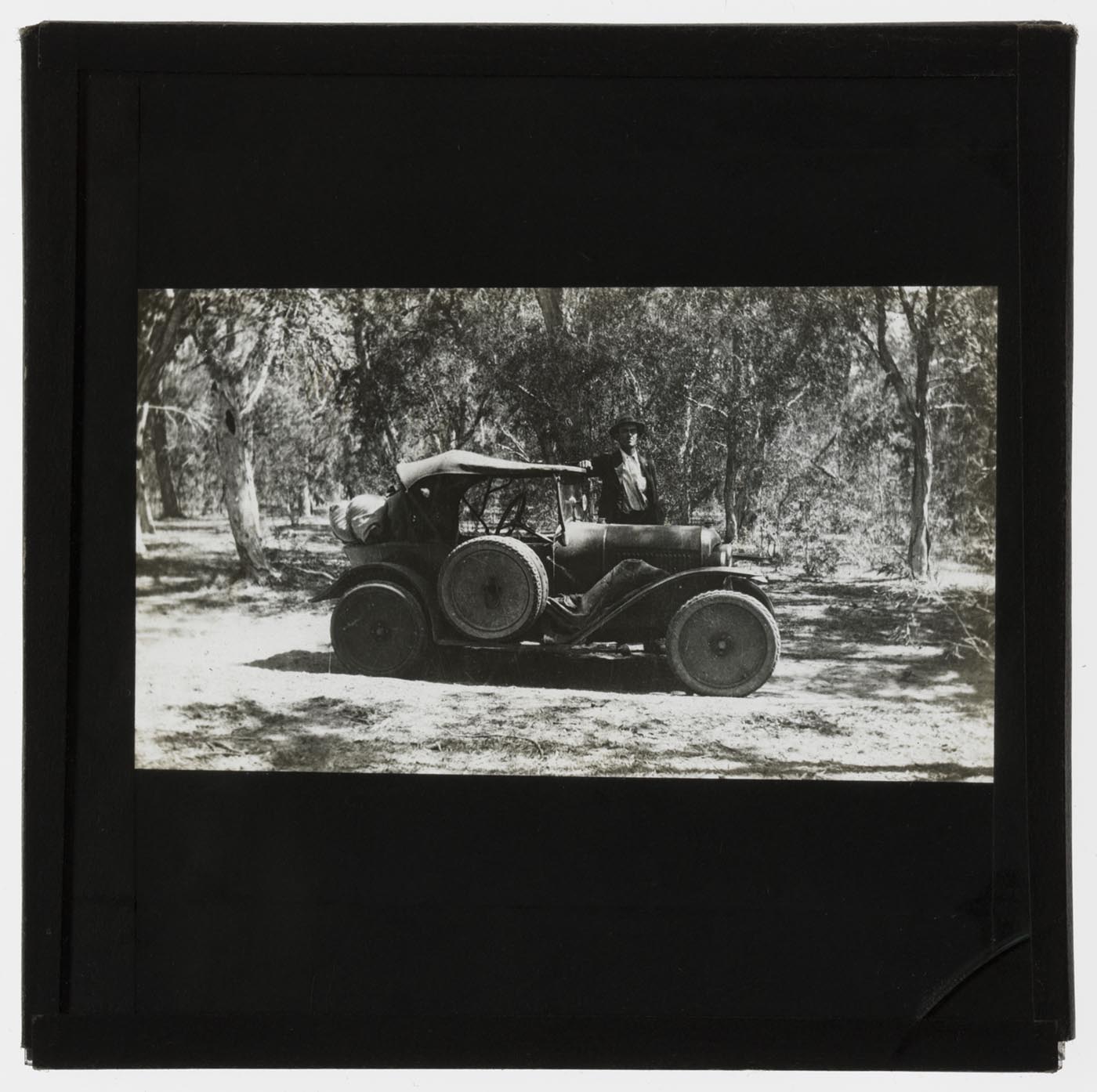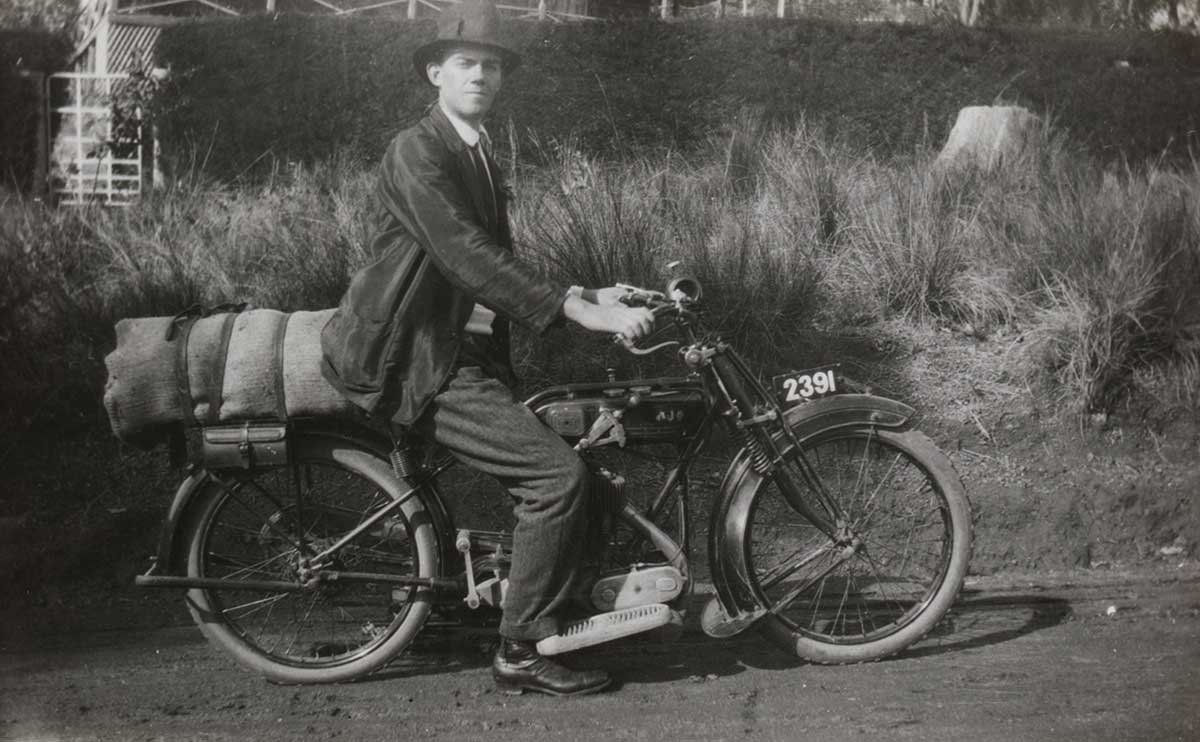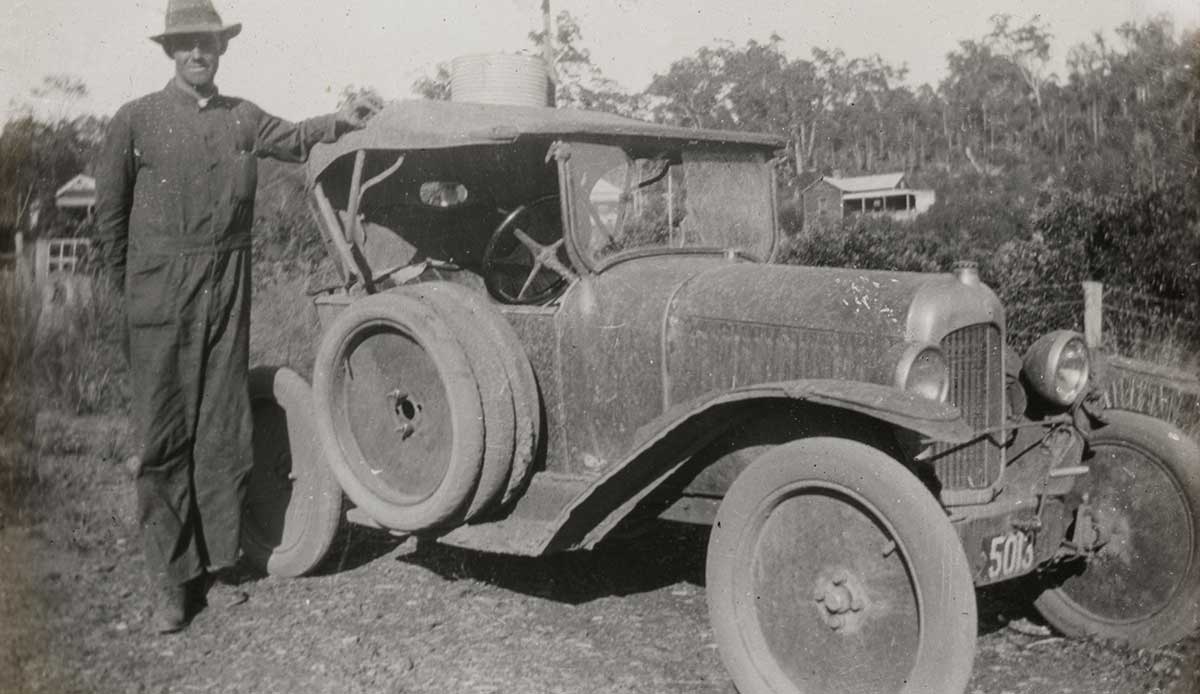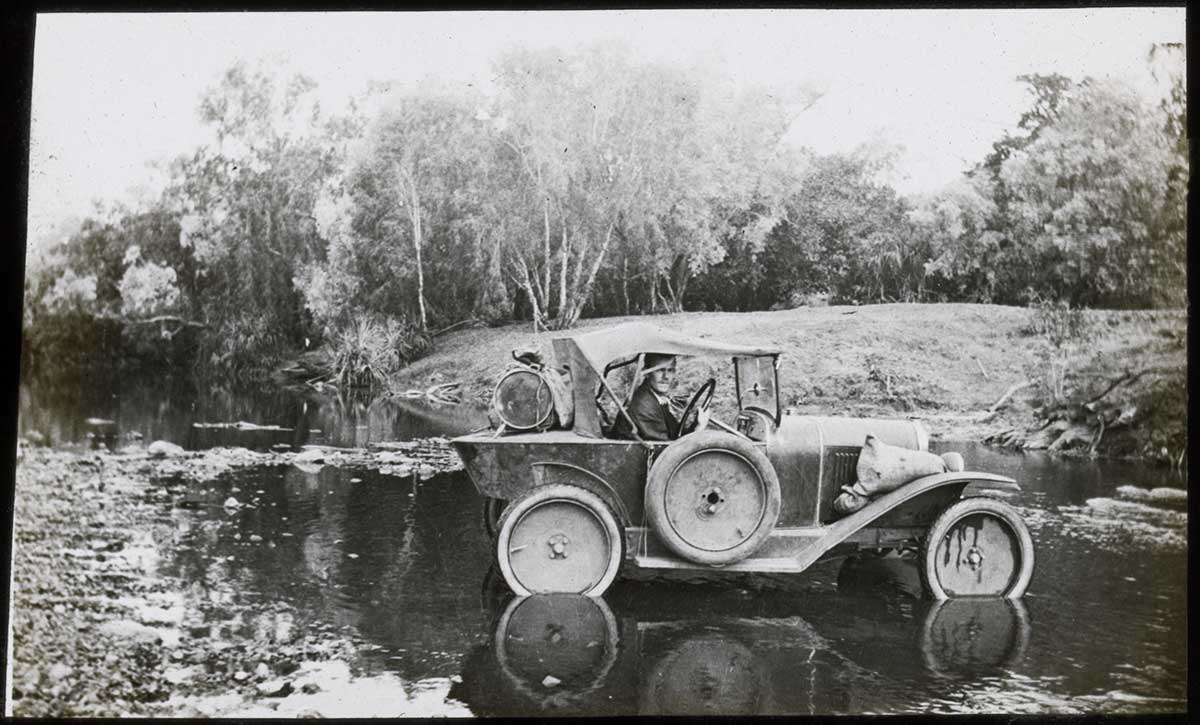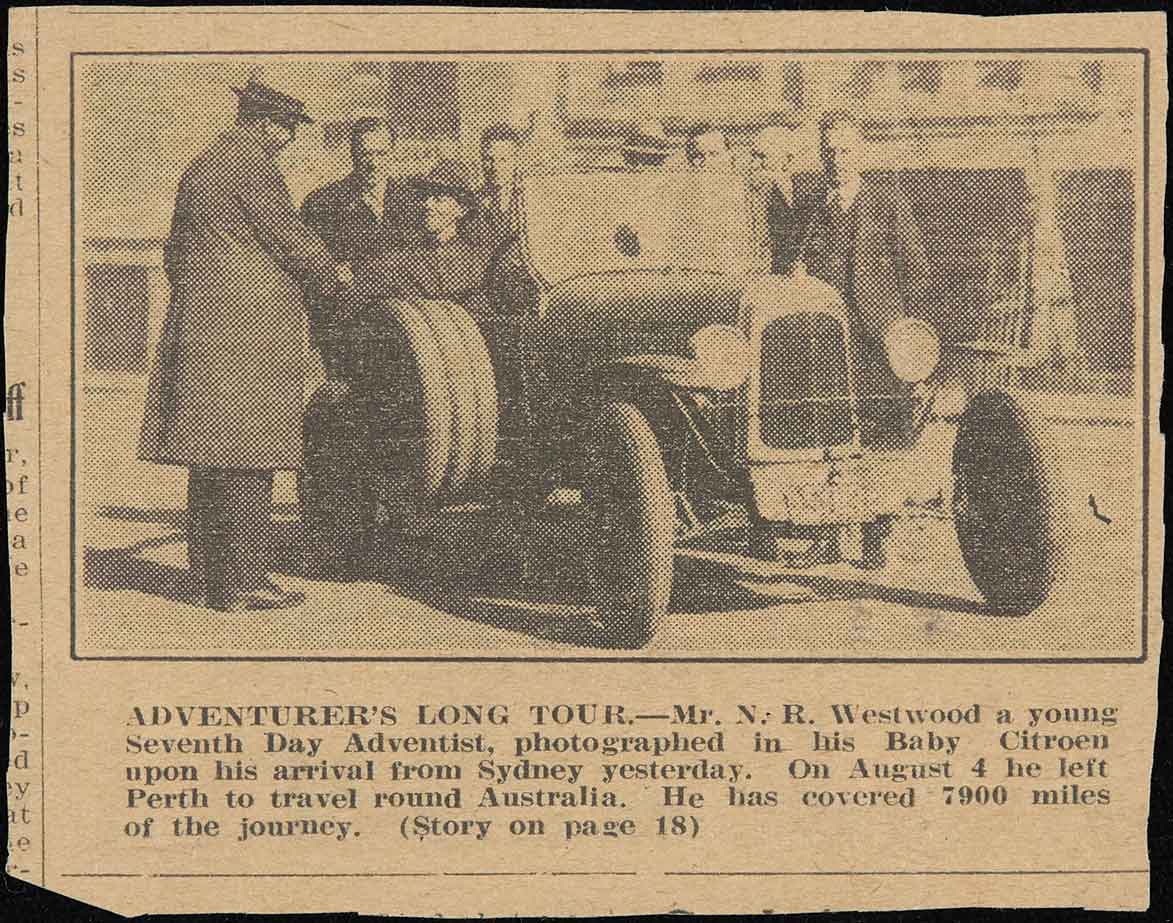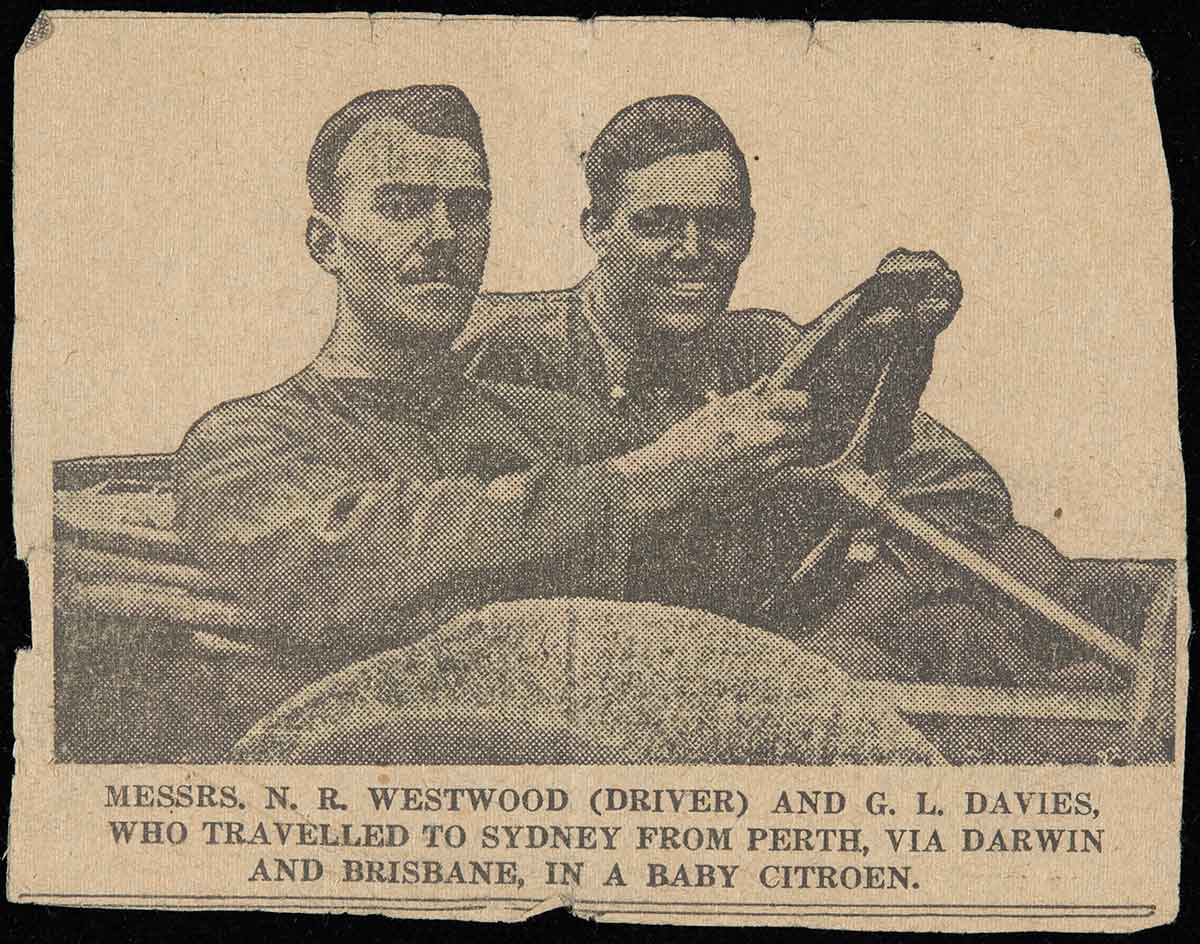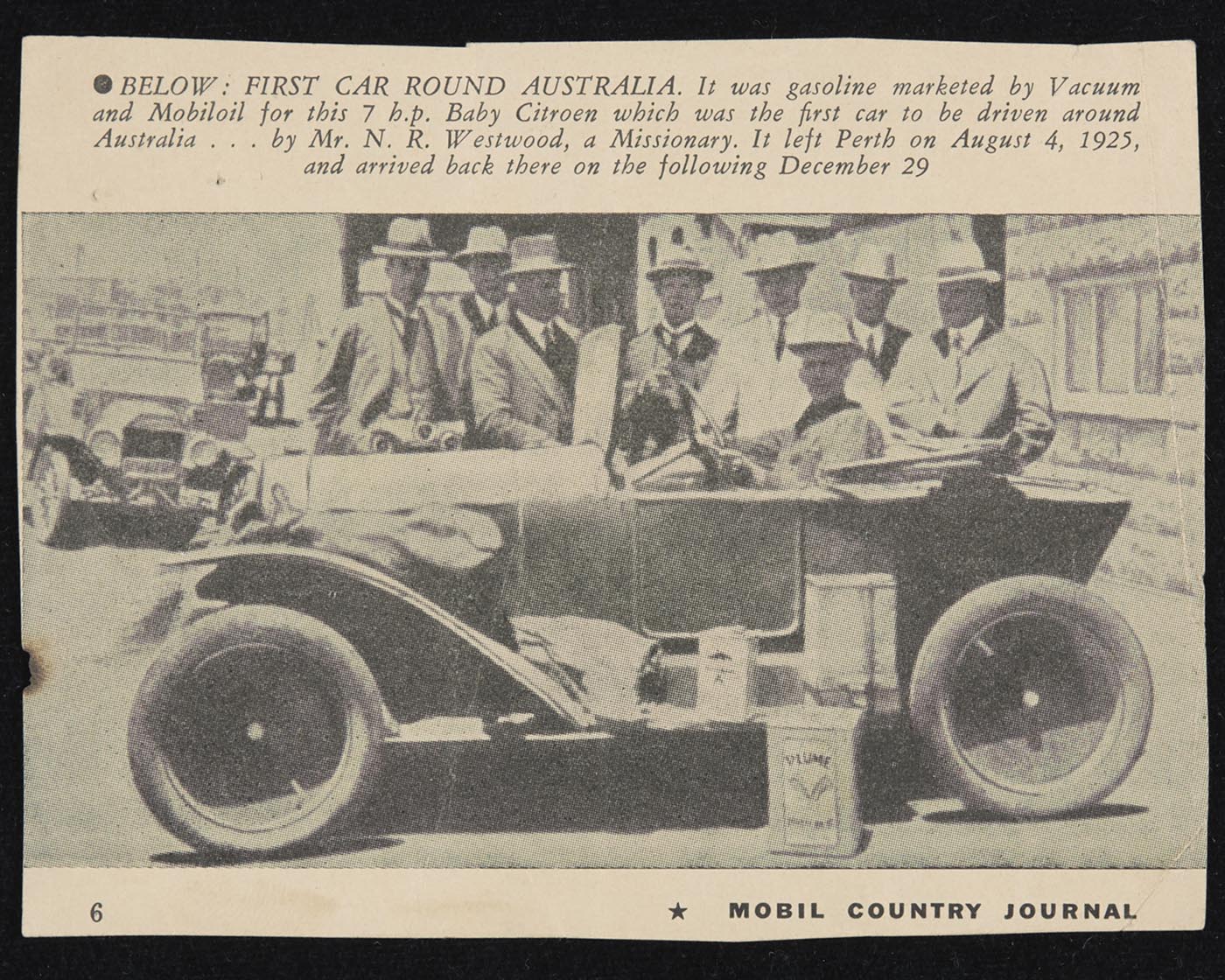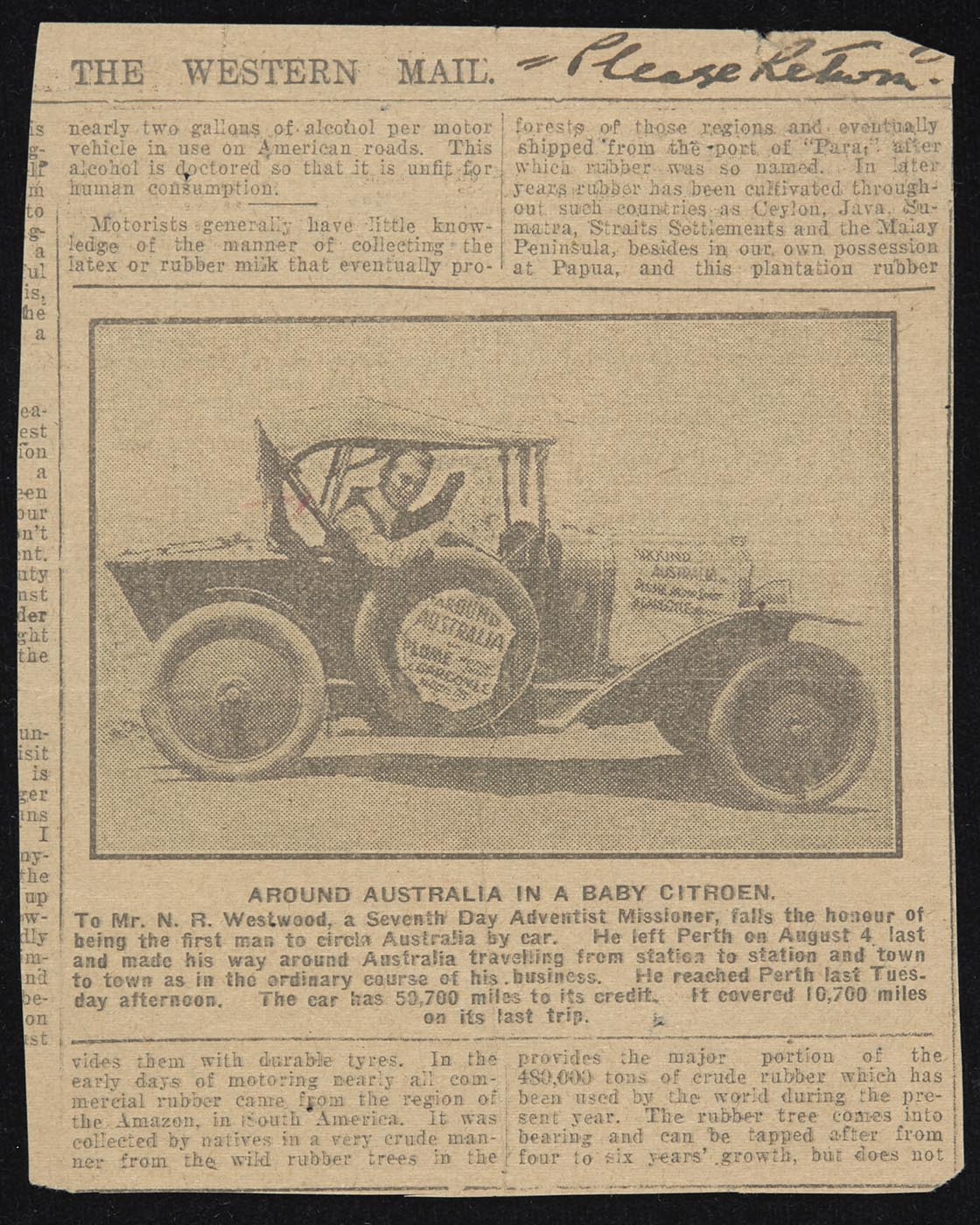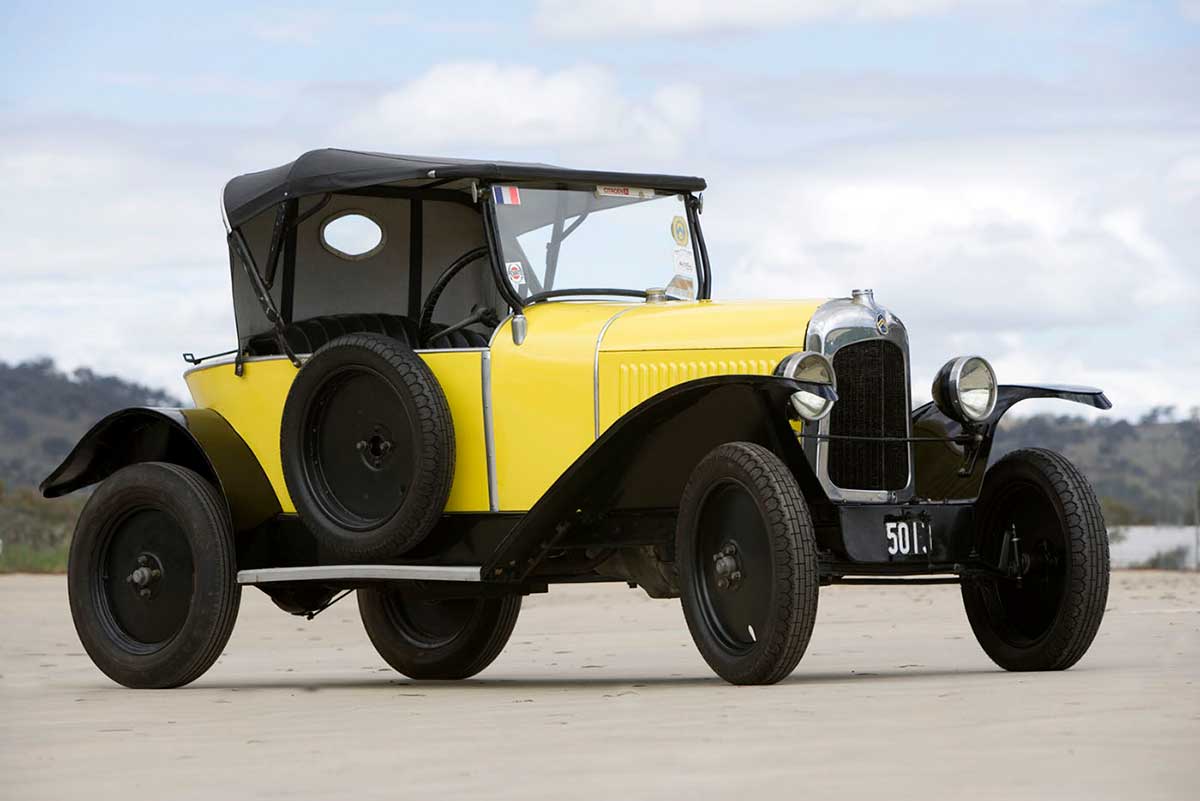In 1925, Perth missionary Nevill Westwood made history as the first driver to circumnavigate the Australian continent by motor car.
Westwood drove a 1923 Citroën 5CV tourer on the 14,000km journey from Perth across the Northern Territory to Brisbane, then Sydney and back across the Nullarbor to Western Australia. The circumnavigation took five months.
The Citroën's voyage was re-enacted in 2025. The car is an important part of the National Museum of Australia's collection but is not currently on display.
This short film shows Nevill Westwood driving into Perth, Western Australia, on the return leg of his journey, December 1925. Item 4883, National Film and Sound Archive. This video has no sound.
First car to circumnavigate Australia
The Citroën 1923 5CV tourer model was first introduced at the 1921 Paris Motor Show. Several hundred were imported to Australia for distribution by local agents in the early 1920s.
Westwood bought the 7-horsepower ‘Baby Citroën’ secondhand in 1924, from local Citroën agency Gilberts. It was reddish-brown in colour and its first owner, the Fremantle biscuit manufacturers Mills & Ware, had reportedly put many miles on the clock.
Taking the long way round in Bubsie
On 4 August 1925, Westwood left Perth with his friend and fellow missionary Greg Davies. By then, his Citroën had been affectionately nicknamed ‘Bubsie’. The pair did not intend to venture further afield than the Kimberley region and carried only a handful of spare parts and supplies.
Although travelling light, Westwood and Davies had a camera to document people and places along their journey, captured in these photographic slides.
Nevill Westwood
Nevill Westwood (1903–1969) was born in the Goldfields region of Western Australia. He was a member of the Seventh Day Adventist missionary church on Hay St, Subiaco.
Westwood travelled extensively by motorcycle in the northwest of WA in 1924, undertaking evangelical work by distributing religious literature at stations and missions in the Kimberley.
Building on his motorcycle journeys, Westwood set out to prove his car’s mettle and within the first few months of his Citroën ownership had acquired at least one speeding fine.
Many Australians had embarked on journeys intent on exploring the country and pushing the boundaries of new technologies in the 1920s. With their reputation for economy, simplicity and reliability, Baby Citroëns were all the rage.
Perth to Broome
After leaving Perth in August 1925, Westwood and Davies motored north along rudimentary tracks, past ant hills, sand dunes and creek beds through Mundiwindi and Marble Bar, staying a night or two at stations and missions along the way. Westwood distributed bibles and Davies offered medical and dental assistance.
When the pair reached Broome they discovered to their surprise that Bubsie was one of only a handful of motor cars to have travelled all the way from Perth. Urged onwards by a telegram from their Citroën dealer, they decided to keep going.
First car across the border
By September 1925, Westwood and Davies and the Citroën had passed over the Western Australia border into the Northern Territory, becoming the first car to traverse the north-west of the continent.
The Citroën was running well, but the delicate tyres and inner tubes were easily punctured by rough terrain formed into jagged peaks by the hooves of passing cattle. Along the way, Davies and Westwood protected the rims with padded grass and gum leaves.
At Wave Hill station, home to members of the Gurindji community, Westwood and Davies purchased the hide of a freshly-slaughtered bullock and ingeniously padded the tyres with strips of skin. For some time after, the smell of roasting beef surrounded the motorists, as the hide was slowly cooked by heat and friction.
In Emungalan, Westwood took advantage of the railway line and travelled by train to Darwin to buy spare inner tubes to enable the journey to continue. All he could find were motorcycle tyres, but they did the job.
At times Westwood and Davies feared they were lost, but they passed several landmarks that reassured them they were on the right track. These included the grave of Aeneus Gunn of Elsey Station and the wreck of a motor car abandoned by adventurer Francis Birtles during an earlier record attempt.
Other notable landmarks were the intersection of the overland telegraph line and the rabbit proof fence that signalled the border with Queensland.
Down the east coast and across the Nullarbor
Taking advantage of good weather, the tenacious pair made a concentrated dash for Brisbane, arriving on 6 November 1925. Enjoying the better roads found in more populated areas, they made for the halfway mark of Sydney and southern Australia.
After Albury, Westwood continued alone to Melbourne and Adelaide. Davies returned to Sydney to train as a nurse at the Sydney Sanitarium hospital.
Westwood crossed the Nullarbor, dropping in to see his brother for Christmas before returning triumphant to Perth. The first-of-its-kind journey had taken five months. Westwood was escorted into the city by a welcoming convoy of motorists on 30 December 1925.
Westwood and Davies acquired a press following as they circumnavigated the continent.
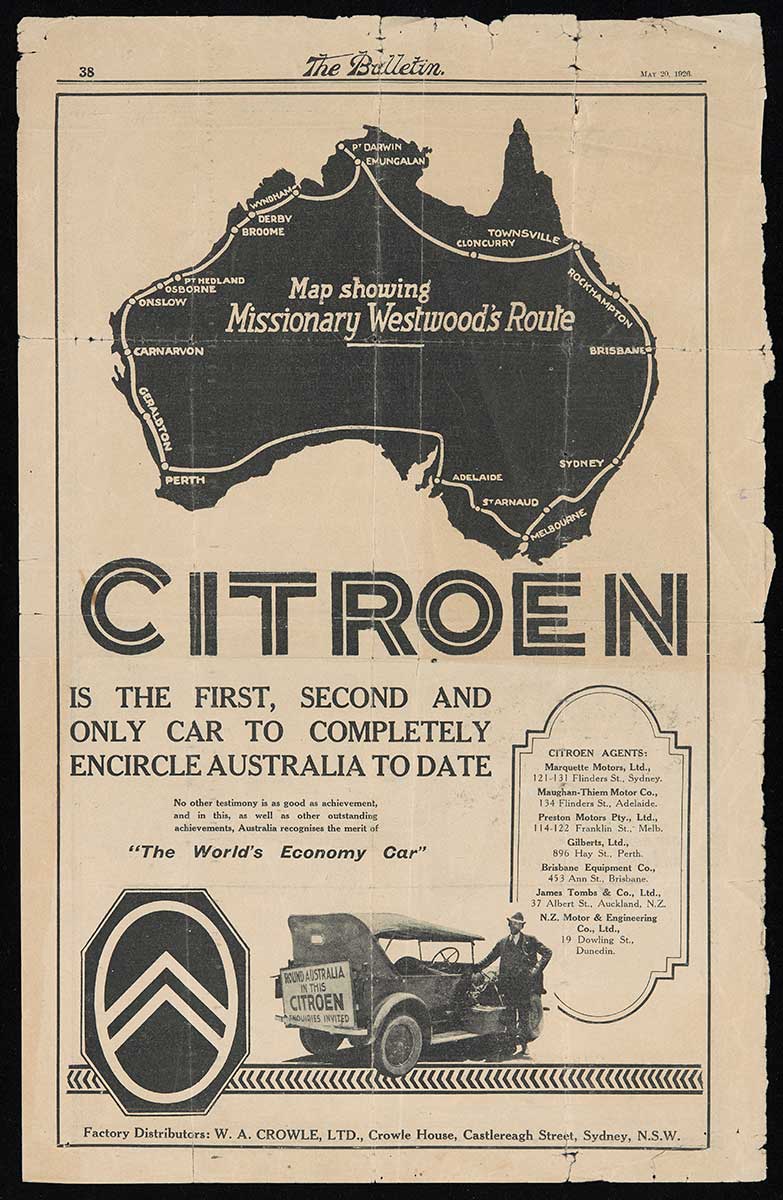
Caring for the car
Gilberts was delighted by Westwood’s success and immediately placed Bubsie in the agency’s window for all to admire.
Westwood then put the Citroën into storage while he continued travelling on church business, including a second trip around the country in 1926. The Citroën remained with the family after his death in 1969 and was passed on to his son and grandson.
In 1975 Ron Westwood began a year-long restoration project. The car’s chassis and body were largely retained, with some repair to the rear panels, doors and hood.
The engine block was discarded and the engine rebuilt, with some original parts re-used and the original radiator maintained. It received a coat of fresh yellow paint.
The National Museum acquired the Citroën from Ron and Matthew Westwood in 2005. Museum conservators have worked to retain its form and function, including the 1975 restoration work which is now part of its history.
Watch a video of conservator Nathan Pharoah with the Citroën
Conservation overhaul
Over a year, the National Museum’s conservators and expert contractors completely disassembled all components of the body, chassis, engine and transmission. Conservation treatment has generally involved removal of chloride corrosion, and the chemical stabilisation of the chassis and body components.
The chassis was repainted, while the body retains the form of the 1970s restoration period. The engine and transmission were also meticulously treated and reconditioned to functional condition.
In our collection
